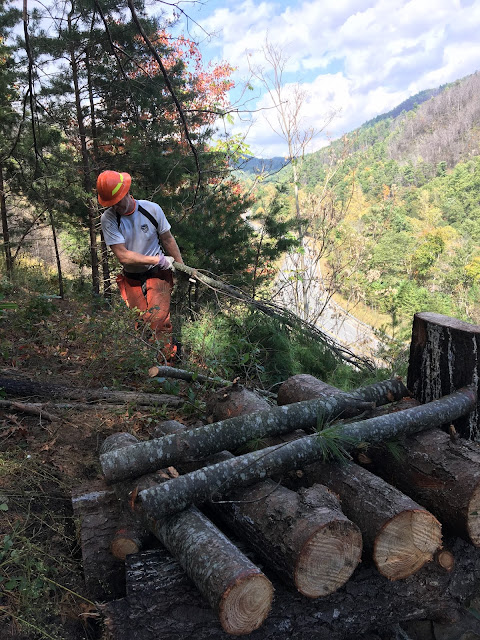A ridgetop outside of Hot Springs, NC that was burned during fires in spring of 2016.
Our "Lincoln log" style wood wasp trap.
We scheduled our first round of cuts to coincide with typical flight times of local Siricids. Of course we didn't realize we would be experiencing record high temperatures in October, lugging a chainsaw and gear up steep slopes...
Moving a tree top off of a steep slope to position next to our trap setup.
Wood wasps love dead and dying pine trees, so we selected an area that recently experienced a stand replacing fire. The challenge was finding live pine trees that aren't already being colonized. We were able to find white pine, Virginia pine, and Table mountain pine trees in good condition.
Bud labeling and marking one of our traps.
A live Table mountain pine tree in a stand with mostly dead overstory.
We did this detection survey back in 2015/2016 on 2 different sites with white pine. We did not detect any of the non-native pest (Great!), but we did not get many of the native siricids either. The traps will sit out in the woods for approximately 9 months. Then, logs from the traps will be moved into rearing cages where we can monitor what comes out.
























